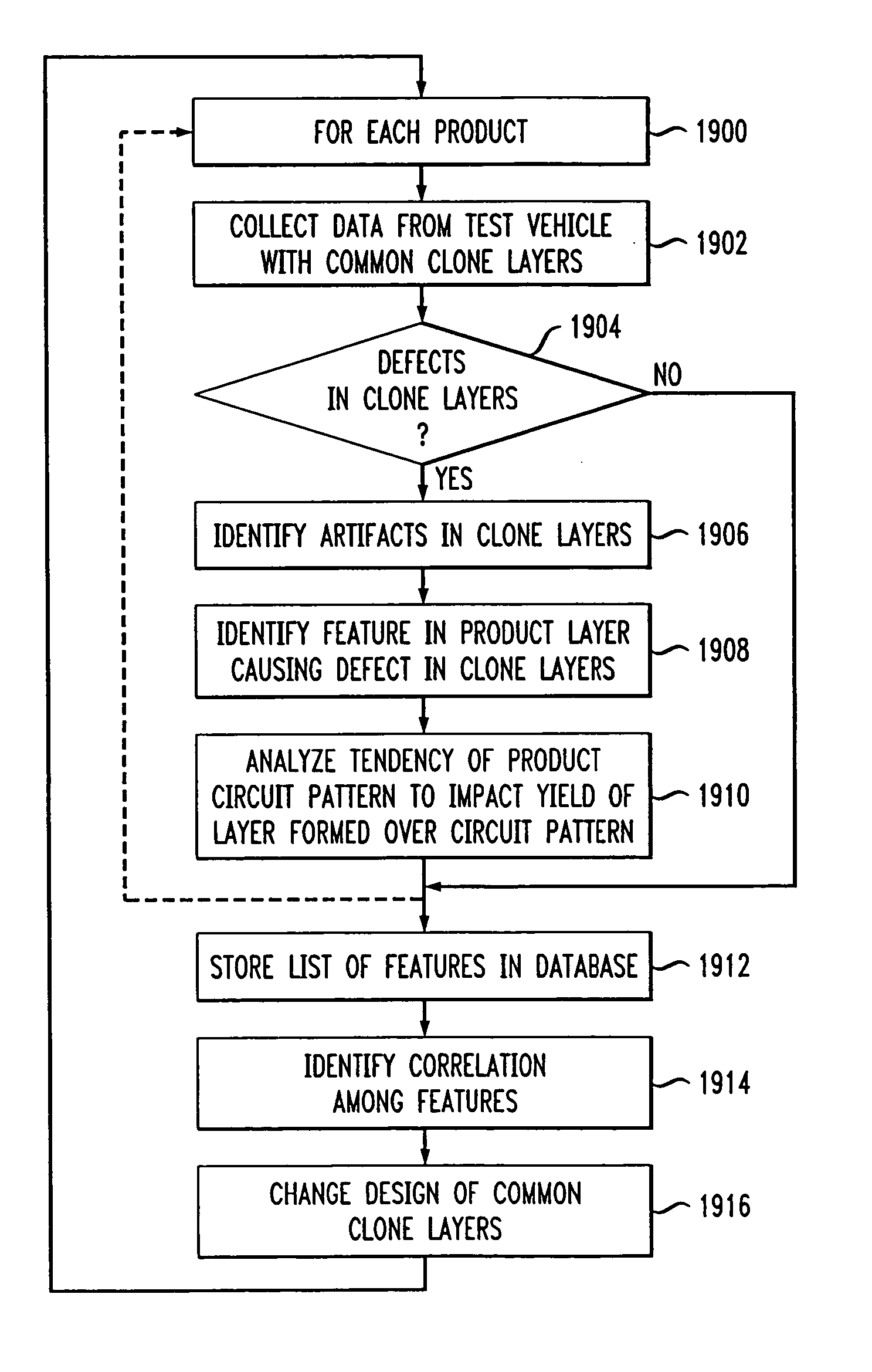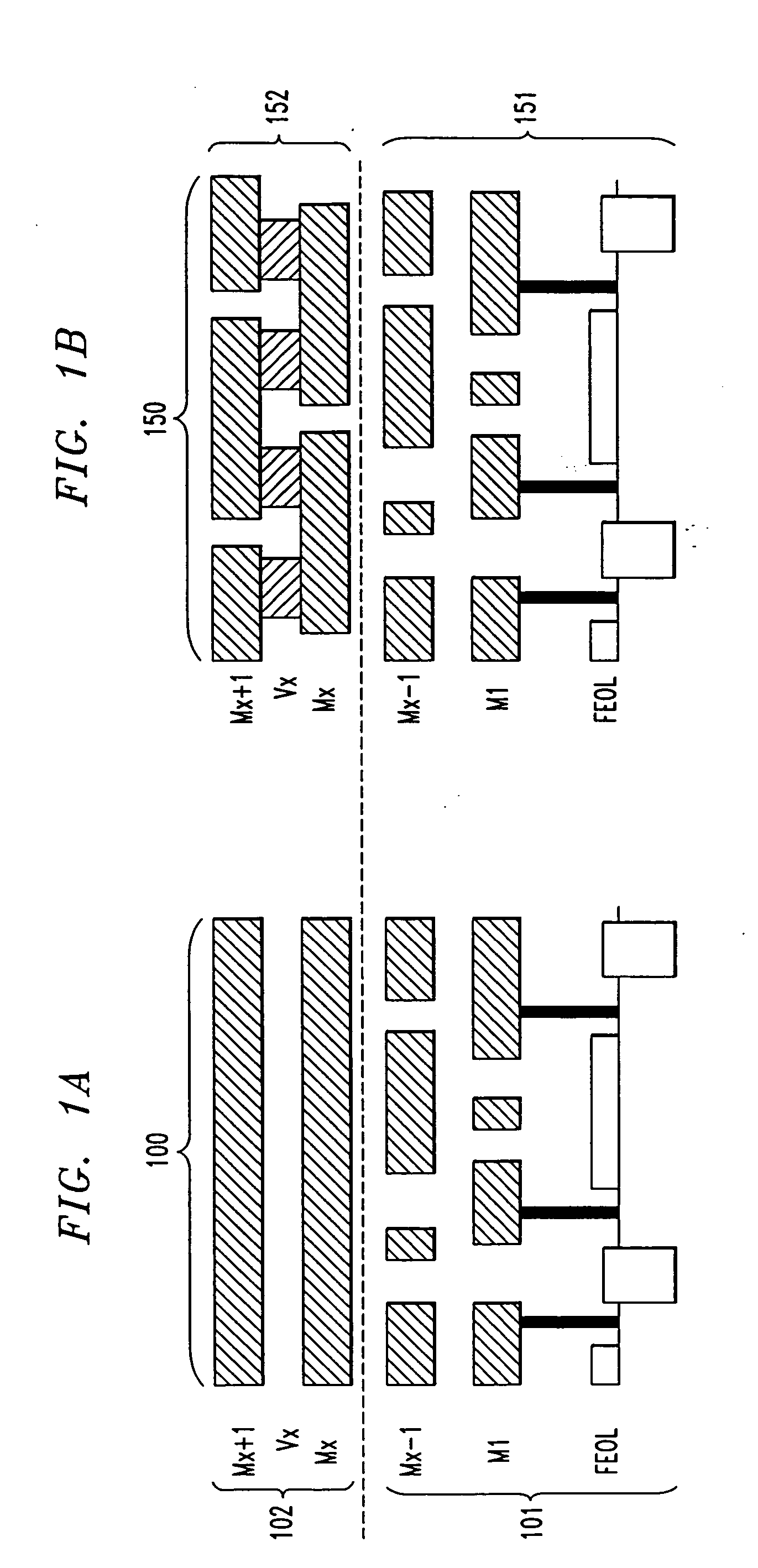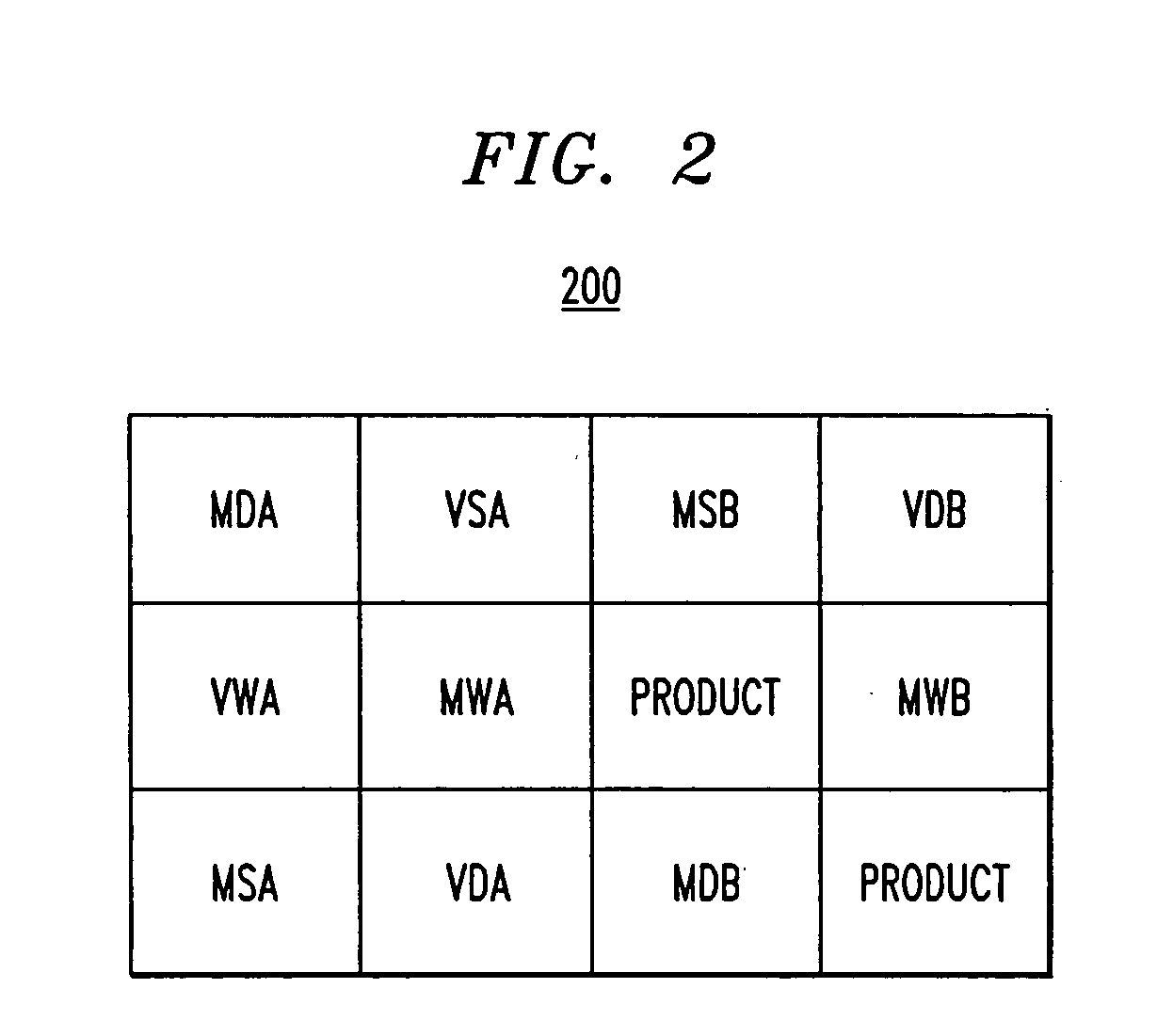Back end of line clone test vehicle
a test vehicle and back end technology, applied in the direction of basic electric elements, semiconductor/solid-state device testing/measurement, instruments, etc., can solve the problems of difficult to predict what artifacts are discovered on an inspected layer and might produce killer defects in the next layer
- Summary
- Abstract
- Description
- Claims
- Application Information
AI Technical Summary
Benefits of technology
Problems solved by technology
Method used
Image
Examples
Embodiment Construction
[0028] The exemplary method pertains to the fabrication of integrated circuits, and more particularly to methods that characterize and quantify classes of structural features that propagate defects through their interaction with an adjacent (vertical) layer within the multi-levels of integrated circuit structures. The example provides a gateway to three-dimensional measurements of structures in a circuit pattern that result in killer defects ill subsequently deposited pattern layers.
[0029] This exemplary method uses geometrical pattern variables of one level (the “clone layer”) that interact with an actual product layer immediately below the clone layer. This technique can identify specific structural features (“aggressors”) of the product layer that can induce defects into a given susceptible geometrical pattern contained in the TV clone layer variables. In some cases, an artifact in the product layer may not be measurable in a single-layer test vehicle, but the same artifact can ...
PUM
 Login to View More
Login to View More Abstract
Description
Claims
Application Information
 Login to View More
Login to View More - R&D
- Intellectual Property
- Life Sciences
- Materials
- Tech Scout
- Unparalleled Data Quality
- Higher Quality Content
- 60% Fewer Hallucinations
Browse by: Latest US Patents, China's latest patents, Technical Efficacy Thesaurus, Application Domain, Technology Topic, Popular Technical Reports.
© 2025 PatSnap. All rights reserved.Legal|Privacy policy|Modern Slavery Act Transparency Statement|Sitemap|About US| Contact US: help@patsnap.com



